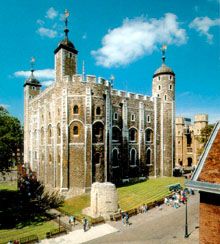The
South East of England

The
Tower of London is one of the unforgettable sites in London. The tower
sums up everything about medieval architecture in one place. The white
tower at the heart of the fortress was built by William I and II in order
to control London, with the walls being added later. Nowadays it is home
to the crown jewels exhibition, recently refurbished, amongst many other
exhibits of medieval weaponry and armour The Tower of London is on the
tidal Thames but easily accessible by public transport from the Grand
Union canal.

Oxford
City and University is among the finest in England, and is also one
of the most interesting to explore. The many colleges and quadrangles
around the city and surrounding areas, as well as the many museums and
galleries make for a great day out. Easily accessible from both the North
Oxford Canal and River Thames.